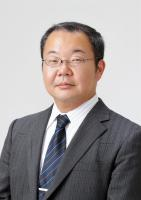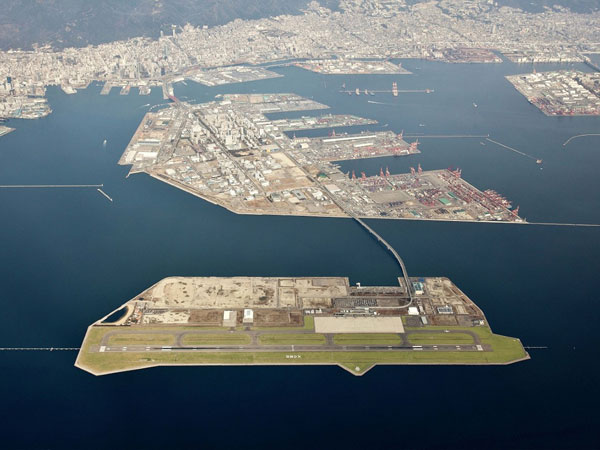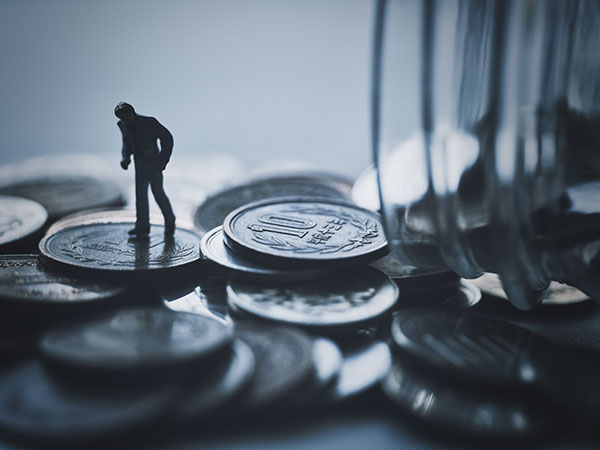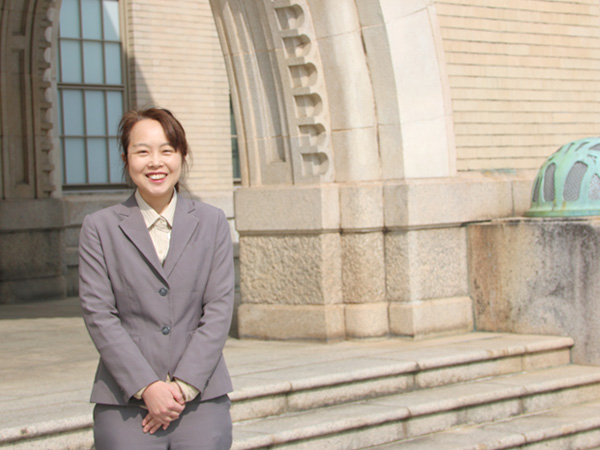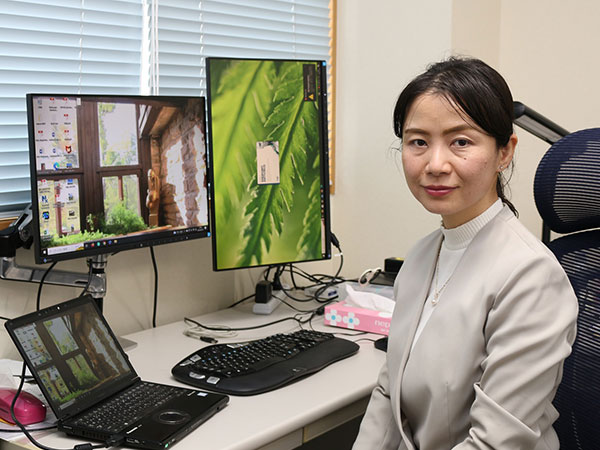The new Bank of Japan (BOJ) governor, UEDA Kazuo, has announced he will adopt the same course as previous governor KURODA Haruhiko and continue to pursue large-scale monetary easing policies targeting 2% annual inflation. At the same time, Ueda outlined a plan to review the results and adverse effects arising from the long-standing implementation of such policies as the groundwork for an eventual shift in policy. With Western countries adopting fiscal tightening as they struggle to curb inflation fueled by high prices for resources caused by the war in Ukraine, how long will Japan’s zero interest rate policy continue? We asked Professor NISHIYAMA Shin-ichi, an expert in economics and monetary policy at the Graduate School of Economics, for his thoughts on Japan’s monetary policy past, present, and future.
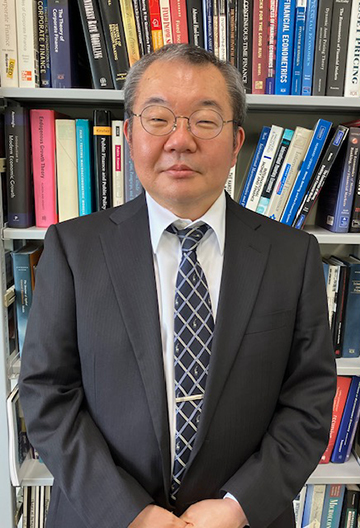
In April, at his first Monetary Policy Meeting since becoming governor, Ueda announced he would continue with Kuroda’s large-scale monetary easing policies and initiate a review of monetary policy. How did you take this news?
Professor Nishiyama:
As anticipated, Ueda announced there would be no major change in monetary policy, opting to persevere with qualitative and quantitative easing in line with his predecessor’s stance. This means large-scale easing will be maintained for now, but it is not yet clear if it will continue indefinitely or whether there will be a shift in policy at some point later.
The way that Ueda plans to use the review to analyze past results and apply the conclusions to future monetary policy is typical of a governor from academia and I find that very reassuring. Governors who are former bureaucrats or who have come up through the BOJ ranks are rarely eager to look back at past events and prefer to concentrate only on the future. However, I think it is sometimes necessary to carry out an objective and scientific review of the effects of past policies.
As the review will cover the past 25 years, it will stretch back to long before Kuroda became governor in 2013.
Professor Nishiyama:
It is probably necessary to go back and review topics such as how the bubble economy was generated from the 1980s onwards, as well as questioning the suitability of monetary policy and the timing and amount of public funding poured into financial institutions after the collapse of the bubble in the 1990s. The BOJ’s monetary easing policy has been criticized as “too little, too late.” I personally think the same way, having published a review in 2005 that used a simulation to show that interest rates should have been reduced earlier.
When I was working at the Bank of Canada at the time of the 2008 Financial Crisis, associates from the Federal Reserve Board (FRB) and United States government frequently asked me about my experiences in Japan. I gave them my view that injection of public funds in the 1990s was too late and too small and explained that if large amounts of public funds had been injected immediately after the collapse of the bubble, perhaps the damage to the financial systems would have been limited and the long period of stagnation that followed could have been avoided. When the Obama administration promptly injected public funds to alleviate the 2008 Financial Crisis, I suppose the economists at the FRB and Ministry of Finance may have taken the Japanese experience as an object lesson in how not to proceed. Although the decision may have attracted criticism, it was thanks to the rapid injection of huge public funds that the United States recovered quickly from the crisis. Economists recognize that adopting “too little, too late” policies like those in post-bubble era Japan will likely result in a “Lost Decade” or longer.
| Period | Policy Point | Governor |
|---|---|---|
| February 1999 | Zero interest rate policy introduced | Masaru Hayami |
| August 2000 | Zero interest rate policy lifted | |
| March 2001 | Quantitative monetary easing introduced | |
| October 2010 | Comprehensive monetary easing implemented | Masaaki Shirakawa |
| April 2013 | Quantitative/Qualitative monetary easing introduced | Haruhiko Kuroda |
| January 2016 | Negative interest rate policy introduced | |
| September 2016 | Yield curve control introduced |
A long overdue, unprecedented monetary easing
Former governor Kuroda persevered with unprecedented monetary easing for more than ten years and even introduced negative interest rates but still could not achieve his initial inflation target of 2%. How do you rate his monetary policies?
Professor Nishiyama:
Personally, I quite like Kuroda’s “Bazooka” ultra-easy monetary policy. But I think he got unlucky. At first, the yen depreciated, stock prices and the inflation rate increased, and the market’s inflation forecast rose. His first year as governor went well but thereafter the anticipated prosperity never materialized, and the market’s inflation forecast fizzled out. Then, due to the consumption tax hike, the COVID-19 pandemic, and other circumstances beyond his control, Kuroda was unable to force the inflation forecast back up. Despite doing everything he could, the results just didn’t materialize.
I think bold monetary easing should have been implemented earlier when Kuroda’s predecessor Shirakawa was governor. Shirakawa did introduce Quantitative Easing (QE), but his approach was too conservative. Had Shirakawa adopted a Bazooka style policy at that time, the outcome may have been different. Government bureaucrats tend to act cautiously when facing new phenomena, so everything reverts to being too little, too late.
As the BOJ continues its long-term zero interest rate policy (ZIRP), it is purchasing large amounts of government bonds to curb long-term interest rates, but it has been pointed out that this bond buying approach cannot be sustained indefinitely. Is it now possible for the BOJ to gradually reduce the amount of government bonds it purchases and control the long-term interest rate?
Professor Nishiyama:
As the BOJ is the majority holder of government bonds, there is no way they can continue purchasing them indefinitely. It will be interesting to see how the pace of QE proceeds from now on. When the BOJ started QE, I think economists were also not expecting to see the bank retaining most of the issued government bonds.
If in future the pace of buying government bonds must be slowed down, the BOJ will openly explain the reasons. It is important that the central bank and market players share consistent thinking since any misunderstanding will generate speculation. Proper communication is key to prevent misplaced speculation from occurring.
An even chance of an interest rate hike in the coming 5 years
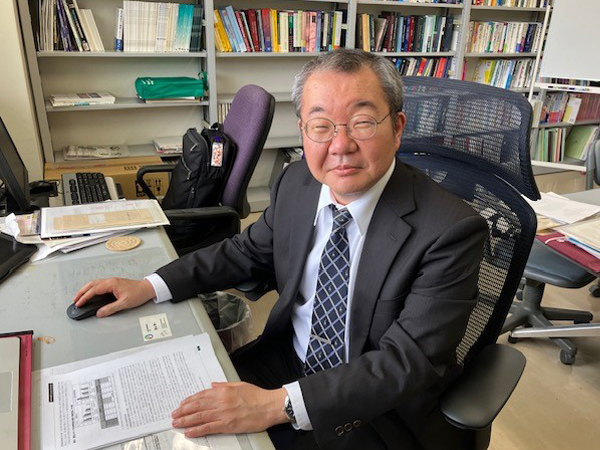
Western countries have decided to hike interest rates to curb inflation fueled by high prices for resources. In particular, the gap in interest rates between the United States, which has continued to increase interest rates, and Japan, with its zero-interest rate, has kept widening since March 2022. Why can’t Japan ditch its ZIRP?
Professor Nishiyama:
Whether Japan decides to hike its interest rates depends on the public accepting the notion that prices are likely rise in future. In other words, the Japanese society must learn to expect inflation. Long-term deflation has instilled households and firms with a deep-seated belief that prices never rise here. This is different to overseas where price hikes are treated as a fact of life. I think the end of zero-interest policies will come into sight when Japanese households and firms start to accept that rising inflation is normal, but I don’t believe we are yet at that point.
FY2022 saw inflation in Japan finally reach 3% but this was due to huge hikes in energy prices and other supply related factors and there was still no demand-fueled price inflation. People in the West don’t consider it a big problem when bus and train fares go up because they are used to the fact that not only the cost of living but also wages will increase as a result. In contrast, firms in Japan end up shifting their cost burden onto suppressing wages in preference to attracting the bad publicity that comes with price hikes. The mass media make a big fuss when firms increase prices, but I would suggest that the smart approach for consumers, realizing that higher company profits eventually lead to wage increases, is to be more tolerant of price hikes.
How will monetary easing policies shape up in future and what will the exit strategy look like?
Professor Nishiyama:
I think monetary easing is already close to its limit, and there is also little scope for movement in monetary policy overall. The BOJ can only persevere with its current stance and must get this message across to the markets and public to foster the expectation of future inflation. Effective communication is therefore essential.
Personally, I think it is too early to talk about an exit strategy. For now, it is important to continue in a stable manner, maintaining expected inflation at 3–4% for about two years, and keep 3–4% actual inflation for two to three years. Then, the time to scrap zero-interest rates will finally arrive. I therefore think Ueda has a 50/50 chance of being able to scrap zero-interest rates by the end of his 5-year tenure as governor. Before that, firms and households need to adopt a “prices will and must rise” mindset. It will be difficult to change the minds of young people who have never experienced rising prices, but I think we cannot discuss scrapping zero-interest rates without first establishing an annual 3–4% rise, not only in prices but also wages.
Finally, please tell us about your recent research activities.
Professor Nishiyama:
I have been using data from the 1950s to the 1990s to discover how Japan’s inflation forecasts have developed over time. My interim findings indicate that expected inflation in Japan dropped sharply prior to the Second Oil Crisis in the late 1970s. It seems that the change in policy carried out by the BOJ and the government to keep the cost of living in check after the First Oil Crisis was having an effect. While the United States finally curbed its inflation forecast only after the Second Oil Crisis had ended, Japan had acted rather quicker. So, I think the development of the 1980s bubble can be attributed to Japan’s success in weathering the Second Oil Crisis. I summarized the initial findings in a working paper and am now re-checking prior to publishing the details in papers and making presentations at conferences.
Resume
| June 1997 | Graduated from International Christian University (ICU), College of Liberal Arts |
| August 2002 | Completed Doctoral Program at The Ohio State University College of Arts and Sciences, Department of Economics |
| September 2002 | Economist, Bank of Japan Institute of Monetary and Economic Studies |
| September 2005 | Senior Analyst, Bank of Canada (Central Bank) |
| April 2010 | Research Fellow, Cabinet Office Economic and Social Research Institute |
| April 2011 | Associate Professor, Graduate School of Economics and Management, Tohoku University |
| April 2017 | Professor, Graduate School of Economics, Kobe University |

